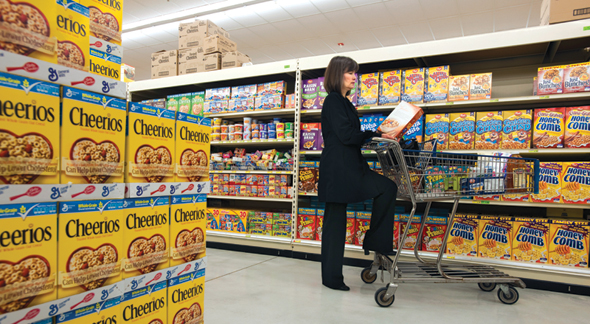Accelerator apps: Ink curing
A cereal killer app
 |
| Photo: Reidar Hahn, Fermilab |
Next time you pour yourself a bowl of Cheerios, thank the particle accelerator that brought you the bright yellow box. A growing number of printing companies are using innovative accelerator technology to print the cereal boxes that grace the breakfast table.
An environmentally friendly printing technique uses particle accelerators to help produce the colorful packaging on many of the products that line grocery store aisles. Ink particles link together and create a durable, scratch-resistant film when struck by a flood of high-energy electrons from a particle accelerator in a process known as curing.
Food packagers have used electron beam technology to cure inks on food packaging for almost 30 years. In 1982, Tetra Pak, a global company based in Switzerland, was among the first to use electron beam technology for printing juice cartons. Today, the use of electron beams for ink curing is growing, thanks to time and energy savings and increasingly diverse printing applications, from rigid cereal boxes to flexible potato chip bags.
To cure the ink, printers use a system about the size of a household refrigerator to create an electron beam. Although electron-beam technology can have relatively high initial hardware costs compared to techniques such as ultraviolet ink curing, electron-beam curing uses less energy and is more cost effective over time. As its use becomes more widespread and the technology advances, Im Rangwalla, the market development manager for Energy Sciences, an energy curing systems provider, expects equipment and operating costs to drop.
Electron beam inks contain only solids, meaning theyre not dissolved in water or organic solvents and do not need to be dried, saving on heating costs and reducing chemical emissions compared to traditional solvent-based printing techniques. The process of electron-beam ink curing is nearly instantaneous, happening in fractions of a second. And since electron beam curing doesnt leave behind unreacted chemicals, it is more compliant with food packaging requirements.
In a green world, it will be the way of the future, Rangwalla said.
Christine Herman
Click here to download the pdf version of this article.
Click here for the "Applications" archive.






